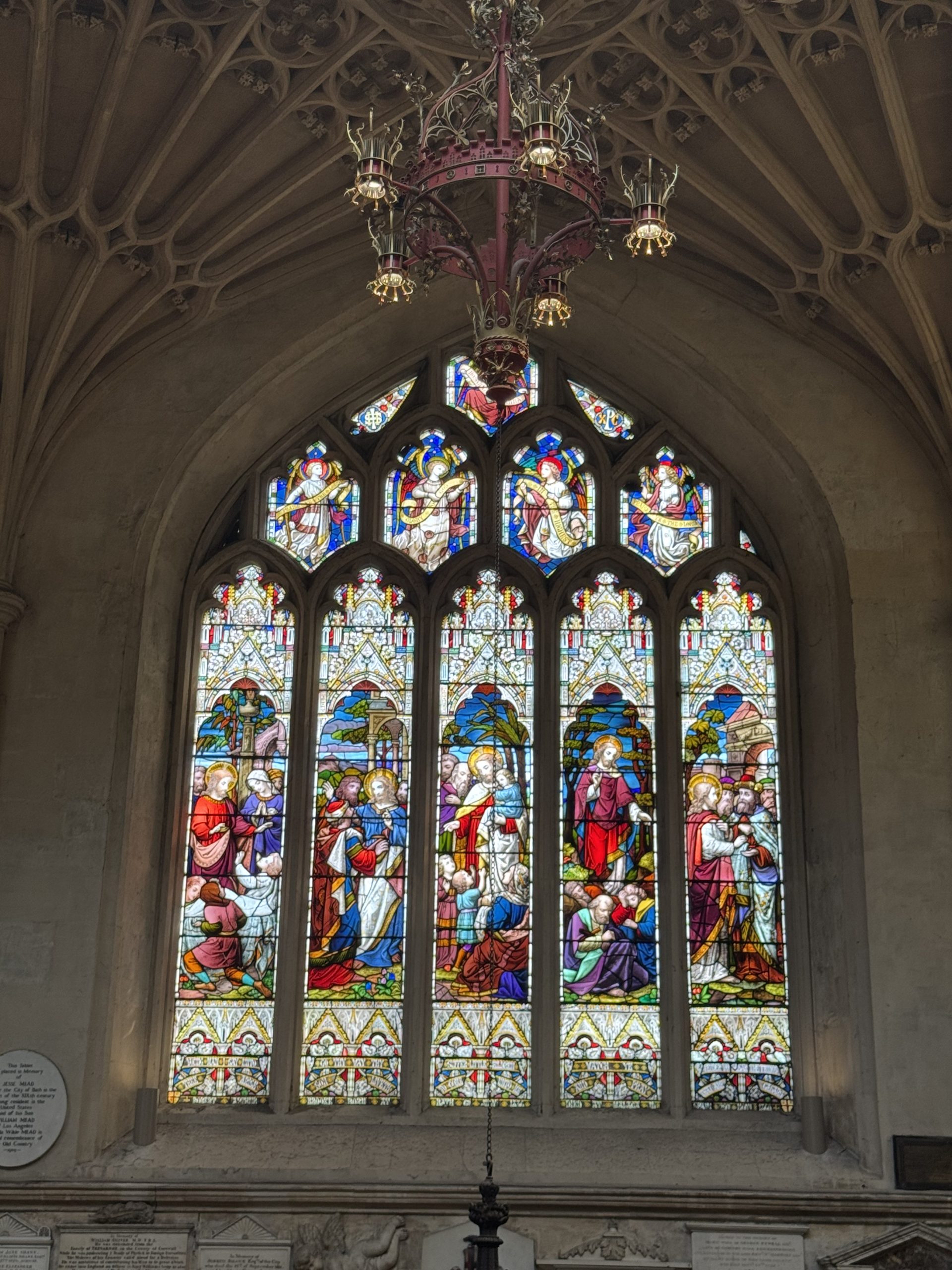Limiting beliefs. We all have them, but what can we do about them?
If you follow me on LinkedIn or Instagram, you’ll know that I’m currently reading You’re Better Than You Think You Are, by the brilliant Angela Cox. In it, she introduces the metaphor of stained glass windows to describe limiting beliefs. She explains that our core convictions – the rules we live by – often stem from past experiences. These beliefs were formed to help us interpret and survive our world. But when they become maladaptive, they distort our view and limit what we believe is possible.
Limiting Beliefs – Extending the Metaphor
This concept resonated deeply with me. But it wasn’t until a recent visit to Bath Abbey that the metaphor truly came to life.
While admiring the beautiful stained glass windows, something unexpected struck me. These windows were once essential storytelling tools for people who couldn’t read – visual depictions of the gospel, designed to communicate meaning simply and clearly. And yet, , even though I knew many of the stories depicted, I found it difficult to fully understand their messages. The windows felt more like beautiful relics than sources of clarity. That moment led me to an important realisation about limiting beliefs.
Angela describes stained glass as something that filters and colours our view. But what if, over time, those filters have become even more layered and confused? What if the ‘windows’ we look through today are no longer simple panes but intricate mosaics – formed not just from one experience, but from a collection of emotional residues, interpretations, social conditioning, and trauma?
In other words, what once served as a lens for understanding has become a collage of confusion.
So here’s the thought I’ve been sitting with:
What if limiting beliefs aren’t just filters? What if they’re complex murals built from years of unprocessed stories – some which are ours, and some which aren’t. To reclaim clarity, we don’t need to smash the window. We need to gently restore it -peeling back layers, examining each piece, and asking: does this still serve me?
It’s not about rejecting our past, but about curating the messages we carry forward. Just like stained glass in an ancient abbey, our beliefs may still hold beauty. But to see clearly, we need to engage with them intentionally – bringing light through, not just colour.
Engaging with Our Limiting Beliefs
Recognising the complexity of our internal stained glass windows is only the beginning. The next step is about choosing to engage with them. Not to smash them in frustration, or cover them up, but to restore it with care – to curate the beliefs we want to carry forward.
The best way is to engage in 1:1 work with a coach who really understands where you’re at and where you’ve come from. Someone who is committed to helping you move forward with clarity and kindness.
Whether you choose to work with me, or someone else will really depend on whether we are a good fit for each other. That’s why I always offer potential clients a free ‘discovery call’ before we work together. It’s an opportunity for you to discover if I’m the safe pair of hands that your stained glass windows need. And it’s my chance to see if my style of coaching (which is thoughtful and compassionate) is the right approach for helping you to clean those windows, rewrite your limiting beliefs and move forward with confidence.
If you’d like to find out more, click here to arrange your Discovery Call.
A Final Thought on Limiting Beliefs
We all have inner stained glass windows shaped by stories we didn’t always choose. But with awareness, intention, and patience, we can begin to see beyond the colours, and into the truth of who we really are.
What beliefs are colouring your view right now? And what would it feel like to see through them just a little more clearly?

